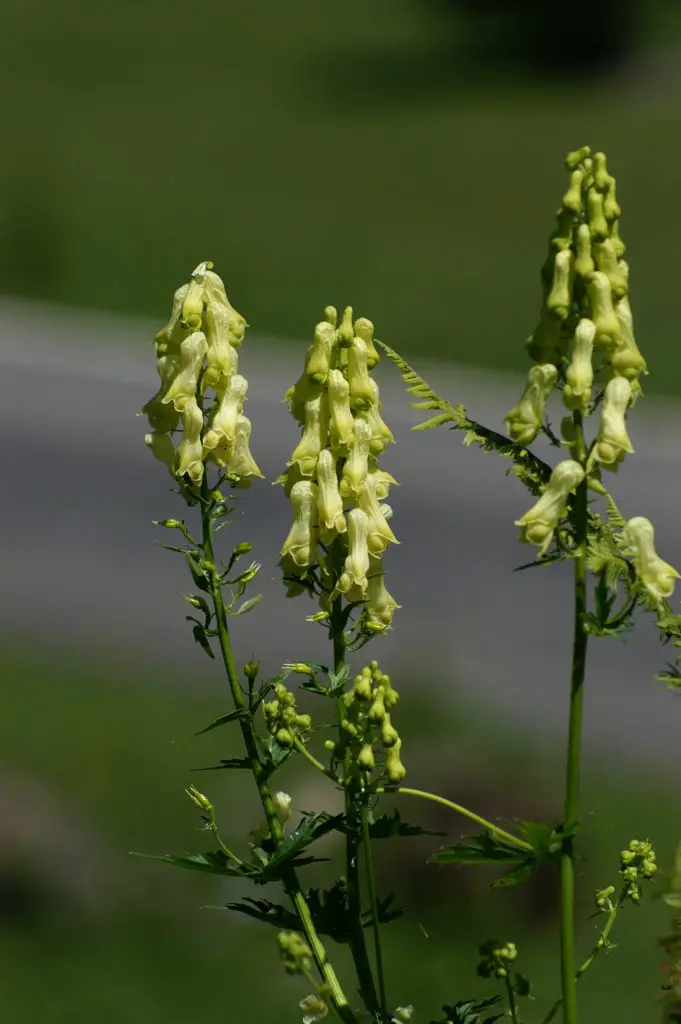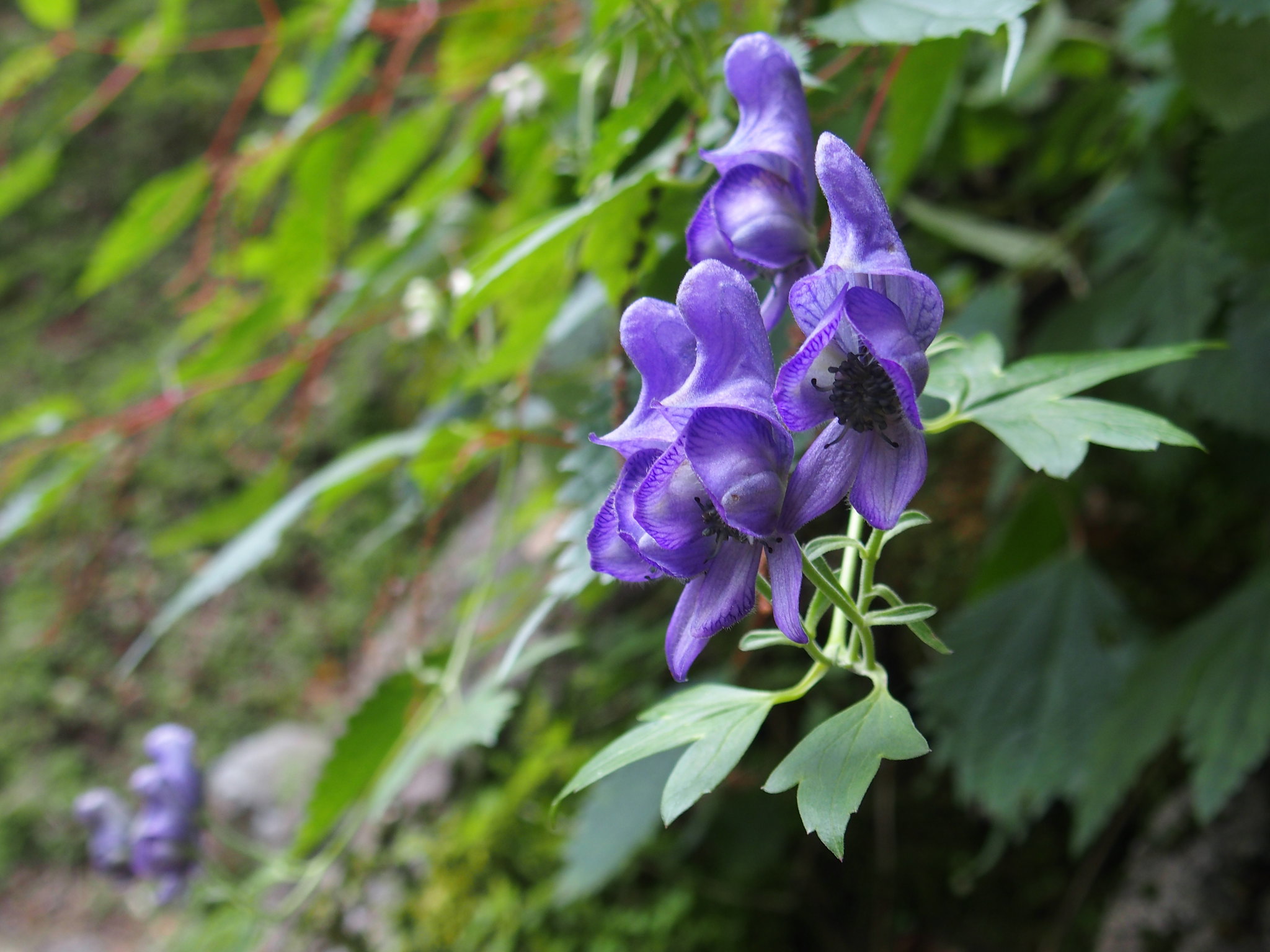

The crown or upper portion of the root gives rise to new plants. It has a short underground stem, from which dark-colored tapering roots descend. Its roots have occasionally been mistaken for horseradish. The most common plant in this genus, Aconitum napellus (the Common Monkshood) was considered to be of therapeutic and toxicological importance.
Aconitum uncinatum (Southern Blue Monkshood). Aconitum reclinatum (Trailing White Monkshood). Aconitum noveboracense (Northern Blue Monkshood). Aconitum napellus (Monkshood type species). Aconitum kusnezoffii : Kusnezoff Monkshood. Aconitum delphinifolium (Larkspurleaf Monkshood). Aconitum columbianum (Western Monkshood). Aconitum carmichaelii (Carmichael's Monkshood). The 3–5 carpels are partially fused at the base. The other petals are small and scale like or non forming. They have a hollow spur at their apex, containing the nectar. They are placed under the hood of the calyx and are supported on long stalks. There are 2–10 petals, in the form of nectaries. They are distinguishable by having one of the five petaloid sepals (the posterior one), called the galea, in the form of a cylindrical helmet hence the English name monkshood. These are handsome plants, the tall, erect stem being crowned by racemes of large and eye-catching blue, purple, white, yellow or pink zygomorphic flowers with numerous stamens. 
The leaves have a spiral or alternate arrangement. Each segment again is 3-lobed with coarse sharp teeth. They are palmate or deeply palmately lobed with 5–7 segments. These herbaceous perennial plants are chiefly natives of the mountainous parts of the northern hemisphere, growing in moisture retentive but well draining soils on mountain meadows.
4 Pharmacology of Aconite and Aconitine.






 0 kommentar(er)
0 kommentar(er)
